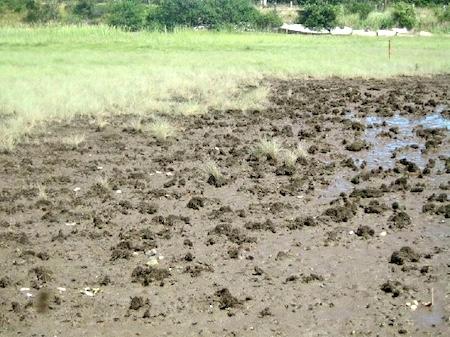Nearly $200 million is scheduled to be spent over the next decade across the National Park System on climate restoration and resilience projects, the Biden administration has announced.
The $195 million, flowing from Biden's Investing in America agenda, could be used on a wide range of projects, from investigating how vulnerable fish species in Eastern national parks are to climate change and restoring coastal marsh systems in parks in the Northeastern corner of the United States to developing "treatments for cultural resources threatened by wildfire" in parks in the Pacific Northwest and developing conservation plans for bison in a dozen parks.
The administration in a news release Tuesday said "[M]any of these projects support restoration and resilience efforts in national parks located in small and rural communities, bringing much-needed investments and jobs that support local American economies."
“America’s national parks drive economic opportunity, extend nature-based solutions in our fight against climate change, and provide the chance for people of all ages to explore and enjoy the great outdoors,” said Interior Secretary Deb Haaland. “Through historic resources from President Biden’s Investing in America agenda, we are investing in these precious places, safeguarding endangered species and making our communities more resilient to climate change.”

Nearly $3.4 million is earmarked for work on conserving and restoring coastal marsh systems in Eastern parks, such as this one at Cape Cod National Seashore that's suffered from salt marsh dieback/NPS file
The funding was initially announced as part of the president’s release of the Fifth National Climate Assessment (NCA5), which assesses changes in the climate, its national and regional impacts, and options for reducing present and future risk. The NCA5 indicates that not only is every region of the country already experiencing the impacts of climate change, but ambitious climate action is underway in every region as well, the release said,
“This investment in conservation demonstrates an unprecedented commitment towards tackling the climate crisis and strengthening America’s resilience,” said National Park Service Director Chuck Sams. “From protecting species to rebuilding outdoors infrastructure, this investment will support ongoing efforts to protect and preserve our nation’s most cherished places.”
These investments from the Inflation Reduction Act include an initial $44 million for work in fiscal year 2023 and advance America the Beautiful, the administration’s initiative to restore and conserve 30 percent of lands and waters by 2030, the release added. The investments also align with and help advance the objectives of the administration’s National Climate Resilience Framework.
"These dedicated funds help our national parks prepare for the unavoidable floods, fires, droughts and storms resulting from climate change," said Chad Lord, senior director of environmental policy and climate change, government affairs, at the National Parks Conservation Association. "Since August 2022, this bill has represented a huge stride towards recognizing the need for national parks to receive the resources necessary to meet the climate crisis."
Lord added that, "[T]hese projects not only respond to the pressing need to prepare for climate change, but also curb climate change impacts on the cultural and natural resources within America’s most treasured places to be protected. It is clear that parks across this country must respond to the urgent need for action and infrastructure as we face more severe, intense climate disasters. [Inflation Reduction Act] funds are a sensible down payment to this end, but parks need sustained funding to prepare for the future so they can thrive, not just survive."
The $195 million will support more than 40 projects across hundreds of national parks, including initiatives that:
- Promote climate resilience in forests from the West coast to the East coast;
- Prevent the extinction of Hawaiian forest birds using innovated technology to suppress the population of non-native mosquitos in key habitats of East Maui;
- Strategically manage abandoned mine lands, such as in Mojave National Preserve, to improve visitor and wildlife safety;
- Prioritize coral health and resilience to climate change in the Southeast region;
- Restore sagebrush ecosystems;
- Implement invasive plant management in grassland and forest landscapes to increase ecosystem health;
- Mitigate the impacts of climate change and improve food security for subsistence users through co-stewardship arrangements with Tribal Nations; and
- Support the expansion of the Community Volunteer Ambassador youth program, focusing on increased volunteerism and community engagement.



Add comment